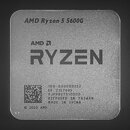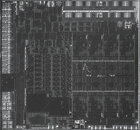We have recently seen the first high-resolution die shots of AMD's Ryzen 5 5600G Cezanne APU thanks to the work of Fritzchens Fritz. The photos show the internal layout of the processor with its Zen 3 CPU, Vega GPU, and corresponding components. To get these shots, the chip had to be delidded by removing the IHS which has been made harder with the move to a soldered design. The Ryzen 5 5600G is a 6 core, 12 thread part with 7 Vega GPU cores which can all be seen in the annotated diagram of the die created by Locuza. The diagram also shows the suspected locations of various PCIe 3.0, and memory controllers along with cache placements for the CPU and GPU. The processor is manufactured on TSMC's 7 nm process and features a total of 10.7 Billion transistors packed into the 180 mm² die.





View at TechPowerUp Main Site





View at TechPowerUp Main Site











